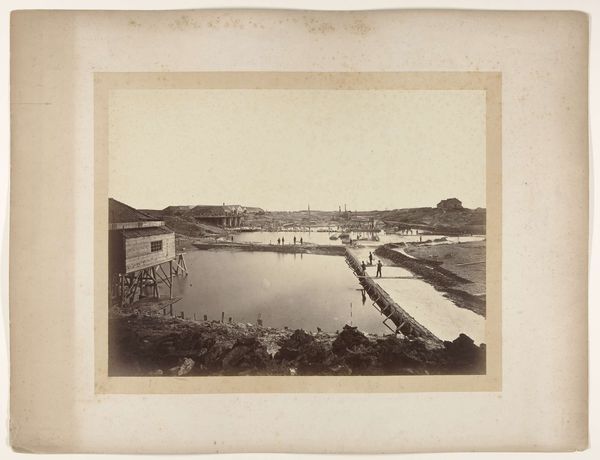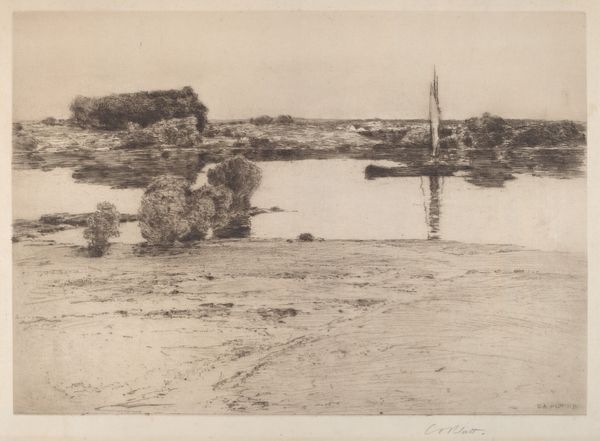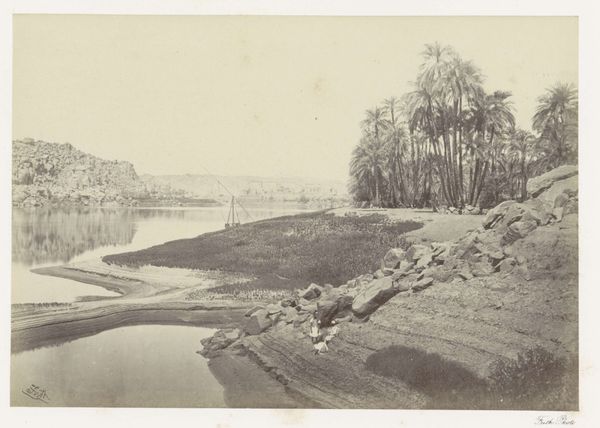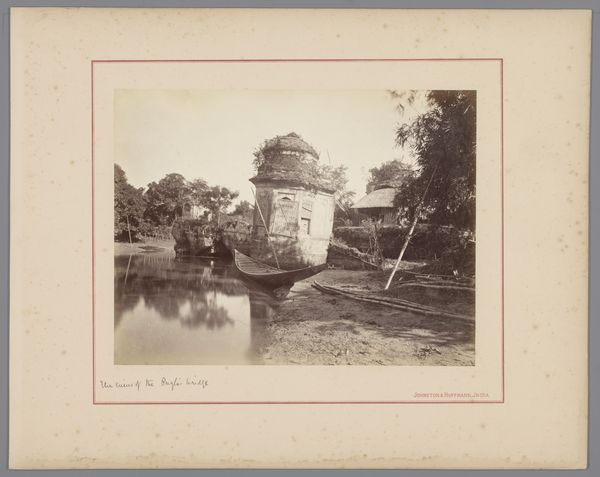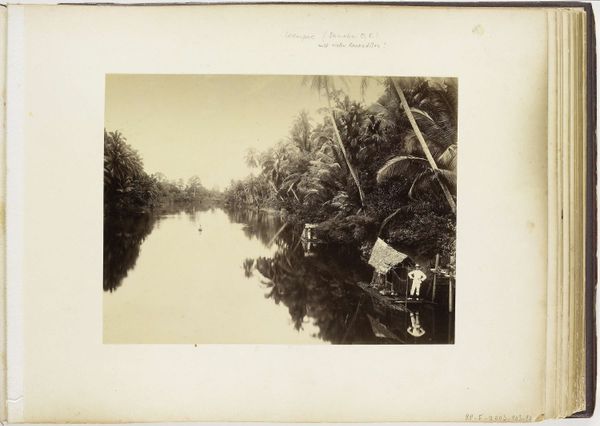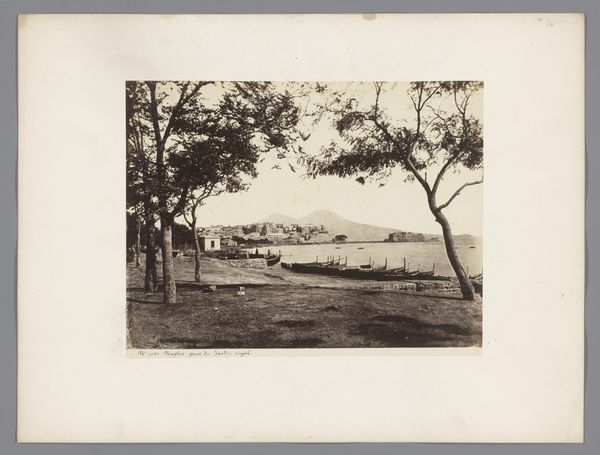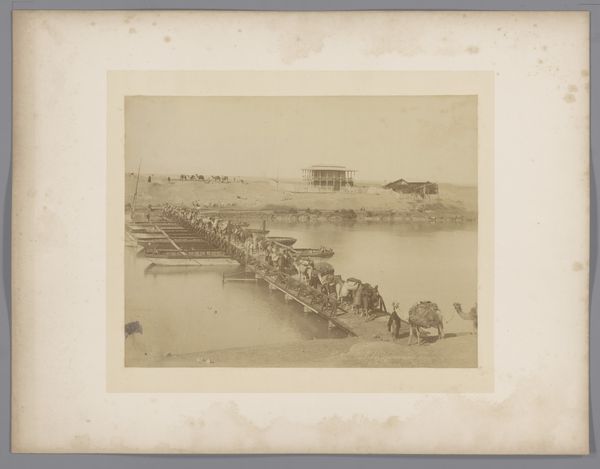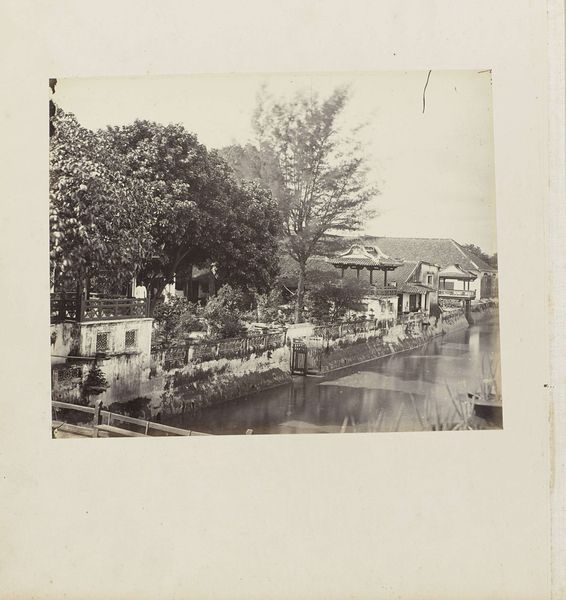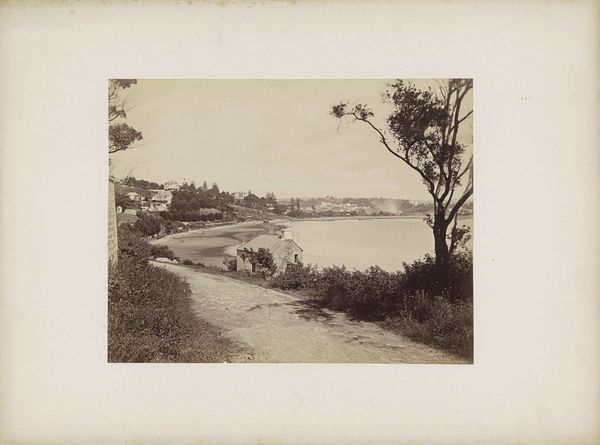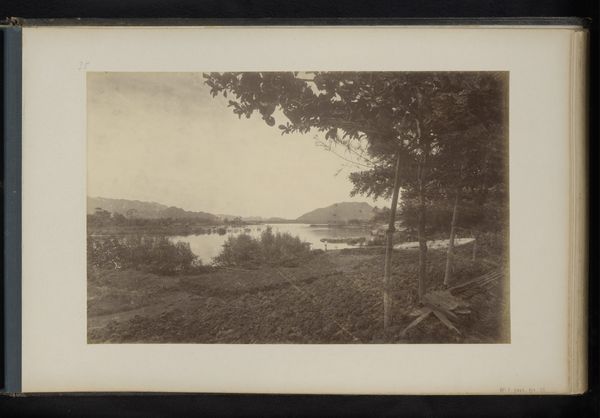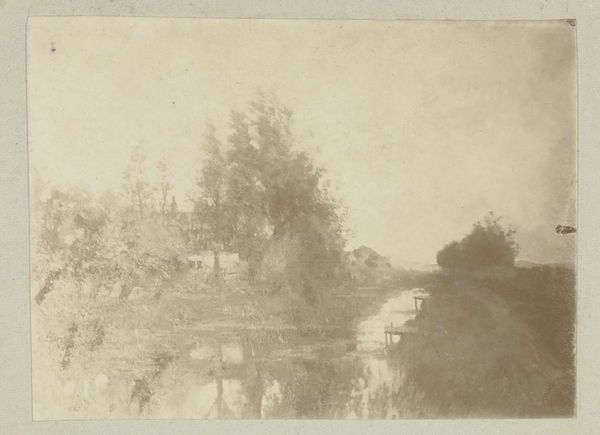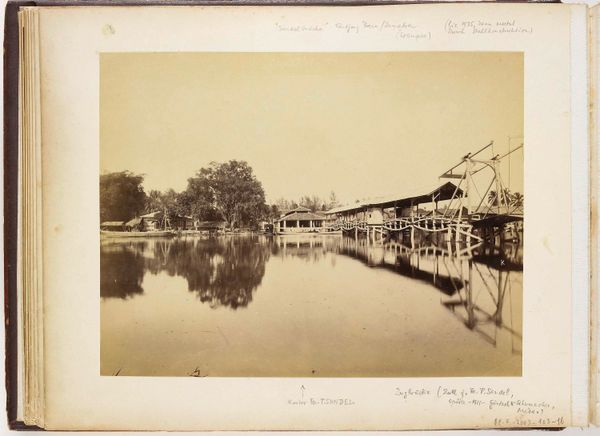
photography, gelatin-silver-print
#
landscape
#
river
#
ancient-egyptian-art
#
photography
#
ancient-mediterranean
#
orientalism
#
gelatin-silver-print
Dimensions: height 218 mm, width 276 mm
Copyright: Rijks Museum: Open Domain
Curator: This gelatin silver print, taken sometime between 1870 and 1890 by C. & G. Zangaki, is titled "Bad van Cleoptra en het eiland Elephantine bij Aswan." Editor: Immediately, I notice the muted sepia tones which lends the scene a certain feeling of timelessness. The textures of the ruins contrasting against the smooth water of the river are striking. Curator: The ruined bath carries quite the romantic aura, doesn't it? To name it "Cleopatra's bath" suggests more about a persistent longing for the allure of Ancient Egypt than about historical certainty. That imagined link amplifies its significance for a European audience. Editor: Indeed, this romantic association likely fueled its commercial appeal. I wonder, though, about the specific photographic process used to capture this image. Gelatin silver prints afforded a certain sharpness and tonal range. And considering the likely laborious process of developing in the field, this print itself became a valuable artifact of a very involved journey. Curator: Exactly, that sense of effort adds another layer of depth, doesn’t it? The sun-drenched vista, the languid river, even the ruins themselves are freighted with the weight of memory, both cultural and personal. We gaze through the lens of 19th-century orientalism, an encounter between Western imagination and an idealized ancient past. Editor: The palm tree too is of material importance. Its strategic placement is indicative of human manipulation of natural space. Beyond aesthetic charm, it implies the commodification and staging of exotic landscapes for tourist consumption. Each photograph served not just as documentation but as a marketing artifact. Curator: A tangible symbol of that cultural exchange, wouldn't you agree? Though time has somewhat altered these visual symbols and our cultural understanding, these kinds of landscapes carry emotional and psychological weight nonetheless. Editor: So, in viewing, we consider the photograph’s chemical processes and its circulation within larger systems of colonialism and trade. The work challenges preconceived notions of what makes “fine art” worthy. Curator: A point well-taken; one image holding a wealth of entangled cultural histories! Editor: An enriching example of where process and history are captured, both on the emulsion and through a wider lens.
Comments
No comments
Be the first to comment and join the conversation on the ultimate creative platform.
